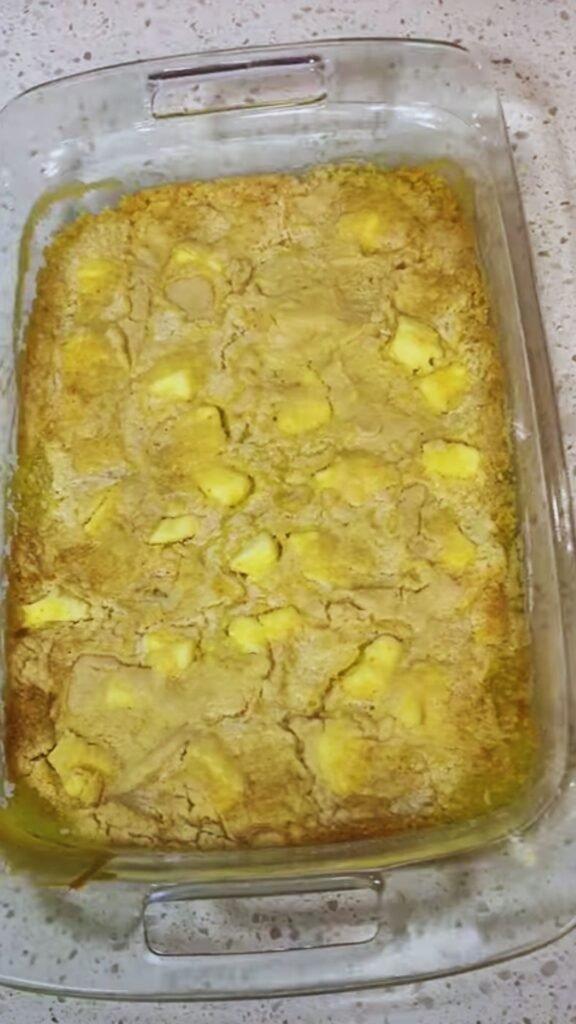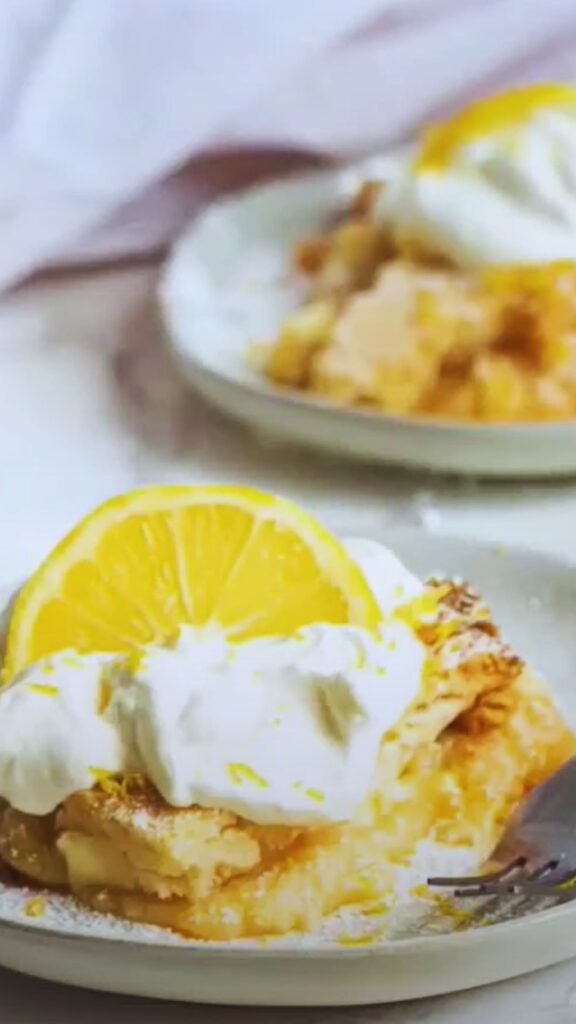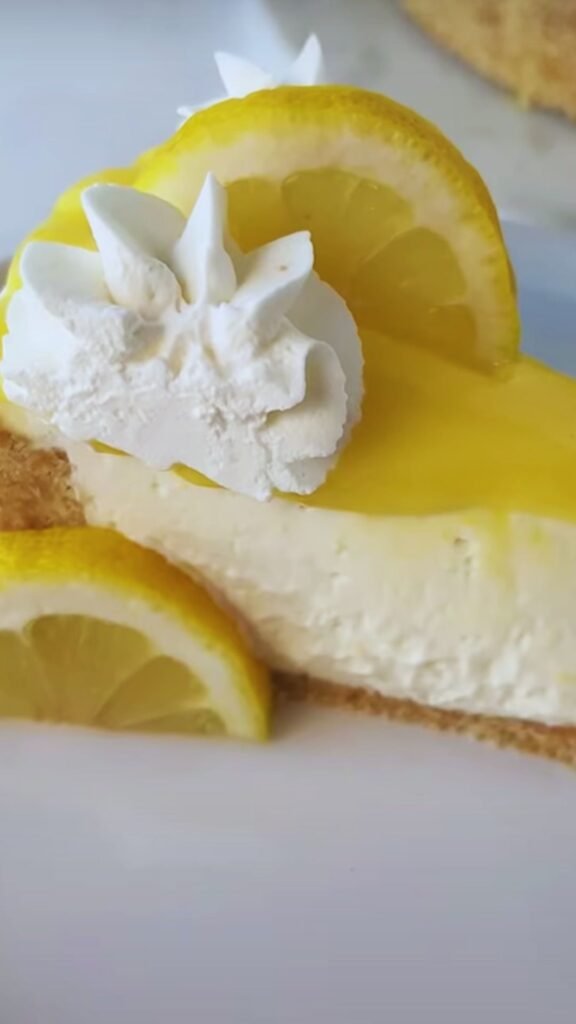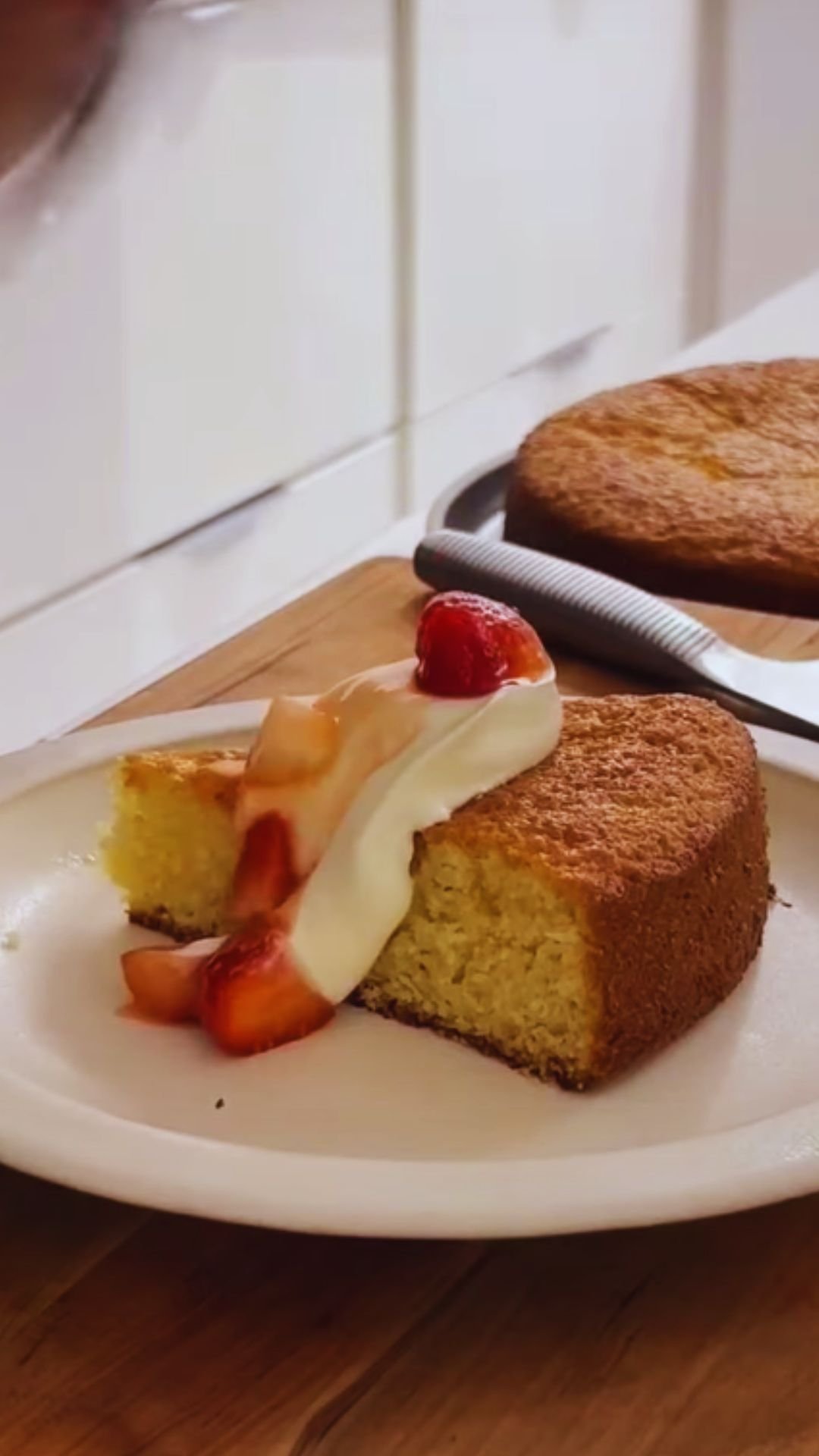There’s something magical about the combination of tangy lemon and smooth cream cheese that creates pure dessert perfection. As someone who’s tested hundreds of dessert recipes over the years, I can confidently say that this Lemon Cream Cheese Dump Cake ranks among my all-time favorites. Not only is it bursting with bright citrus flavor, but it also delivers that coveted “wow factor” with minimal effort—exactly what I look for in a reliable recipe.
The beauty of dump cakes lies in their simplicity. True to their name, you simply dump the ingredients into a baking dish and let the oven work its magic. No complicated techniques, no special equipment, just delicious results every time. This particular version elevates the humble dump cake with a decadent cream cheese layer that transforms it from a casual treat to something worthy of special occasions.
Why You’ll Love This Recipe
Before diving into the how-to, let me share why this recipe deserves a permanent spot in your dessert rotation:
- Ridiculously simple preparation – Perfect for beginner bakers or busy days
- Bright, refreshing flavor profile – The perfect balance of sweet and tart
- Make-ahead friendly – Actually tastes better after sitting overnight
- Versatile serving options – Delicious warm or cold
- Budget-friendly ingredients – Uses pantry staples you likely have on hand
- Crowd-pleasing results – I’ve never met anyone who doesn’t love this cake
Whether you’re hosting a summer gathering, need a last-minute dessert for unexpected guests, or simply crave something sweet without the fuss, this dump cake has you covered. Let’s get baking!
Ingredients You’ll Need
For the Cream Cheese Layer:
- 16 oz (2 blocks) cream cheese, softened
- 1 cup granulated sugar
- 2 large eggs
- 2 teaspoons pure vanilla extract
- 2 tablespoons fresh lemon zest (from approximately 2 lemons)
- 3 tablespoons fresh lemon juice
For the Cake Layer:
- 1 box lemon cake mix (15.25 oz)
- ½ cup unsalted butter, melted (1 stick)
- ½ cup fresh lemon juice
- Zest of 1 lemon
For the Topping:
- ½ cup unsalted butter, cold and cut into small pieces
- ½ cup white chocolate chips (optional)
- 2 tablespoons turbinado sugar (or regular granulated sugar)
Essential Equipment
While this recipe is wonderfully simple, having the right tools makes preparation even easier:
- 9×13 inch baking dish (glass or ceramic works best)
- Electric mixer (stand or handheld)
- Microplane or zester for lemon zest
- Citrus juicer or reamer
- Mixing bowls
- Measuring cups and spoons
- Spatula

Preparation: Step-By-Step Instructions
Step 1: Prepare Your Workspace and Ingredients
- Preheat your oven to 350°F (175°C).
- Lightly grease your 9×13 inch baking dish with butter or cooking spray.
- Take cream cheese out of the refrigerator 30-45 minutes before starting to ensure it’s properly softened.
- Wash and dry lemons before zesting and juicing them.
Step 2: Create the Cream Cheese Layer
- In a large mixing bowl, beat the softened cream cheese until smooth and fluffy (about 2 minutes).
- Gradually add the granulated sugar and continue beating until well incorporated.
- Add eggs one at a time, beating well after each addition.
- Mix in vanilla extract, lemon zest, and lemon juice until just combined.
- Pour this mixture into your prepared baking dish, spreading it evenly with a spatula.
Step 3: Prepare the Cake Layer
- In a medium bowl, combine the dry lemon cake mix with melted butter, lemon juice, and lemon zest.
- Stir until the mixture forms moist crumbles—it won’t form a smooth batter, and that’s exactly what we want!
- Evenly sprinkle these crumbles over the cream cheese layer, making sure to cover the entire surface.
Step 4: Add the Final Touches
- Dot the top of the cake with the small pieces of cold butter, distributing evenly across the surface.
- If using, sprinkle the white chocolate chips over the top.
- Finish with a light dusting of turbinado sugar for a delightful crunch and sparkle.
Step 5: Bake to Perfection
- Place the baking dish on the middle rack of your preheated oven.
- Bake for 40-45 minutes, or until the top is golden brown and the center is set but still slightly jiggly.
- To test doneness, insert a toothpick 2 inches from the edge—it should come out mostly clean with a few moist crumbs.
Step 6: Cool and Set
- Remove from the oven and place on a wire rack.
- Allow the cake to cool at room temperature for at least 1 hour.
- For best results, refrigerate for 2-3 hours or overnight before serving to allow the flavors to fully develop and the texture to set perfectly.

Recipe Variations
One of the reasons I return to this recipe time and again is its adaptability. Here are some of my favorite variations that keep this dump cake feeling fresh and exciting:
Seasonal Twists
| Season | Flavor Variation | Additional Ingredients | Special Notes |
|---|---|---|---|
| Spring | Strawberry Lemon | Add 1 cup diced strawberries to cream cheese layer | Reduces baking time by 5 minutes |
| Summer | Blueberry Lemon | Add 1½ cups fresh blueberries over cream cheese layer | Creates beautiful purple-blue swirls |
| Fall | Cranberry Lemon | Add ¾ cup dried cranberries soaked in ¼ cup orange juice | Soak cranberries for 30 minutes before using |
| Winter | Ginger Lemon | Add 2 tsp ground ginger and ¼ cup finely chopped candied ginger | Perfect for holiday gatherings |
Dietary Adaptations
For those with specific dietary needs, this versatile recipe can be modified:
- Gluten-Free Version: Substitute the regular cake mix with a gluten-free lemon cake mix. The texture will be slightly different but equally delicious.
- Lower Sugar Option: Reduce sugar in the cream cheese layer to ⅔ cup and use a sugar-free cake mix. You can also replace white chocolate chips with chopped nuts for a healthier crunch.
- Dairy-Free Adaptation: Use dairy-free cream cheese alternative and plant-based butter. Note that the texture will be somewhat different, and you may need to adjust baking time by 5-10 minutes.
Troubleshooting Common Issues
Even with a simple recipe like this one, occasional challenges can arise. Here’s how to address them:
Problem: Cream Cheese Layer Is Too Runny
Solution: This typically happens when the cream cheese was over-softened or the eggs were too large. If you notice the mixture seems too loose, add 1 tablespoon of cornstarch and mix well before pouring into the baking dish.
Problem: Cake Top Browns Too Quickly
Solution: If you notice the top browning too fast while the center isn’t set, loosely cover the baking dish with aluminum foil for the remainder of the baking time.
Problem: Cake Seems Underbaked in Center
Solution: Different ovens may require slightly different baking times. If the toothpick test shows too much wetness, continue baking in 5-minute increments, checking after each addition. Remember that some jiggle in the center is normal—it will set further as it cools.
Problem: Cake Mix Layer Stayed Powdery
Solution: This happens when the cake mix wasn’t properly moistened. Make sure to thoroughly mix the cake powder with the melted butter and lemon juice until no dry pockets remain.
Serving Suggestions
I’ve found that this versatile dessert can be presented in multiple ways depending on the occasion:
Casual Family Dessert
Serve slightly warm with a scoop of vanilla ice cream for an indulgent after-dinner treat. The contrast between the warm cake and cold ice cream creates a delightful sensory experience.
Elegant Dinner Party
Cut into precise squares and serve chilled on individual dessert plates. Garnish with fresh berries, a sprig of mint, and a light dusting of powdered sugar for a sophisticated presentation.
Brunch Gathering
Serve at room temperature alongside a selection of fresh fruits and coffee. The bright lemon flavor pairs beautifully with morning beverages.
Complementary Accompaniments:
- Fresh whipped cream with a hint of lemon zest
- Raspberry or blueberry coulis drizzled over the top
- Lemon sorbet for an intensified citrus experience
- Vanilla bean custard sauce
- Hot tea or coffee
- Sparkling water with a twist of lemon

Storage and Make-Ahead Tips
One of the greatest advantages of this lemon cream cheese dump cake is how well it keeps and even improves with time:
Refrigerator Storage
- Store covered in the refrigerator for up to 5 days.
- I recommend using an airtight container rather than simply covering the baking dish to prevent the cake from absorbing other food odors.
Freezer Instructions
- This cake freezes beautifully for up to 3 months.
- Cut into individual portions before freezing for easy single servings.
- Wrap each piece tightly in plastic wrap, then place in a freezer-safe container or ziplock bag.
- To thaw, place in refrigerator overnight or at room temperature for 2-3 hours.
Make-Ahead Strategy
- For the best flavor development, I actually recommend making this cake 1 day before serving.
- Prepare and bake as directed, then cool completely.
- Cover and refrigerate overnight.
- Remove from refrigerator about 30 minutes before serving to take the chill off.
Nutritional Information
While this is definitely a treat rather than an everyday food, it’s helpful to know what you’re consuming. Here’s the approximate nutritional breakdown per serving (based on 12 servings):
| Nutrient | Amount Per Serving |
|---|---|
| Calories | 385 |
| Total Fat | 24g |
| Saturated Fat | 14g |
| Cholesterol | 95mg |
| Sodium | 310mg |
| Total Carbohydrates | 42g |
| Dietary Fiber | 0.5g |
| Sugars | 28g |
| Protein | 5g |
| Vitamin A | 15% DV |
| Vitamin C | 8% DV |
| Calcium | 6% DV |
| Iron | 4% DV |
*Values are approximate and may vary based on specific brands of ingredients used.
The Secret to Making This Recipe Perfect
After making this recipe countless times, I’ve discovered a few insider tips that take it from good to extraordinary:
- Temperature matters: Ensure your cream cheese is at the perfect softened consistency—able to be easily indented with your finger but still holding its shape. Too cold and you’ll get lumps; too warm and the layer won’t set properly.
- Don’t skimp on fresh lemons: While bottled lemon juice might be convenient, the zest and freshly squeezed juice make an enormous difference in the flavor profile. This is where the vibrant, aromatic oils reside that give this cake its signature zing.
- The power of patience: This is one of those rare desserts that truly improves with time. The flavors meld and intensify, and the textures reach perfect harmony after resting overnight in the refrigerator.
- Butter distribution: When dotting the cold butter pieces on top, try to distribute them as evenly as possible. This ensures the entire surface develops that gorgeous golden crust during baking.
- The wobble test: When checking for doneness, remember that the center should still have a slight wobble—similar to how you’d check a cheesecake. It will continue to set as it cools.
Questions & Answers
Q: Can I use a different flavor of cake mix if I can’t find lemon? Yes! A white or vanilla cake mix works well as a base. Simply increase the amount of lemon zest to 3 tablespoons and lemon juice to ¾ cup total throughout the recipe to maintain that bright lemon flavor.
Q: Is there a way to make this recipe less sweet? Absolutely. You can reduce the sugar in the cream cheese layer to ¾ cup without affecting the texture. You can also omit the white chocolate chips and turbinado sugar topping.
Q: Can I make this in a smaller pan for a thicker cake? Yes, but you’ll need to adjust the baking time. Using an 8×8 or 9×9 inch pan will require approximately 55-65 minutes of baking time. Watch it carefully, as the thicker cake is more prone to browning too quickly on top while remaining undercooked in the center.
Q: My family doesn’t like lemon desserts. Can I make this with a different citrus? Definitely! This recipe works beautifully with lime, orange, or even grapefruit. For orange, reduce the sugar slightly as oranges are naturally sweeter than lemons. For grapefruit, you might want to increase the sugar by 2-3 tablespoons to balance the bitterness.
Q: I don’t have a stand mixer. Can I still make this recipe? Absolutely! A handheld electric mixer works perfectly well for this recipe. In a pinch, you can even mix by hand with a wooden spoon, but be prepared for a good arm workout to get the cream cheese mixture smooth enough.
Q: Can I add a streusel topping instead of the butter pieces? Yes! For a streusel variation, combine ½ cup flour, ¼ cup brown sugar, ¼ cup cold butter (cut into small pieces), and ¼ cup chopped nuts in a food processor. Pulse until crumbly and sprinkle over the cake mix layer before baking.
Q: My cake developed a crack down the middle. Did I do something wrong? Not at all! Cracks are perfectly normal in this type of cake due to the different textures between layers. They add rustic charm and don’t affect the flavor. If presentation is a concern, simply dust with powdered sugar before serving to disguise any cracks.
Q: How can I tell when the cake is done if the toothpick test always comes out with wet crumbs? Look for these visual cues: the edges should be set and pulling away slightly from the sides of the pan, the top should be golden brown, and the center should jiggle only slightly when the pan is gently shaken. Remember that it will continue to set as it cools.
Why This Recipe Works: The Science Behind the Deliciousness
As a curious baker, I’ve always been fascinated by understanding not just how to make something delicious, but why certain techniques and ingredient combinations work so well together. This recipe is a perfect example of culinary chemistry in action:
The layering system creates distinct textures and flavors that complement each other beautifully. The dense, creamy bottom layer forms as the heavier cream cheese mixture naturally settles during baking. Meanwhile, the cake mix, when combined with butter and additional moisture from lemon juice, undergoes a transformation in the oven.
The acidic lemon juice doesn’t just add flavor—it reacts with other ingredients in the cake mix to create tenderness while the sugar caramelizes on top to form that irresistible golden crust. The cold butter pieces strategically placed on top slowly melt during baking, creating delicious pockets of richness throughout the cake layer.
What’s particularly clever about dump cakes is how they subvert traditional cake-making rules. There’s no need to worry about overmixing and developing gluten, which would make a conventional cake tough. Instead, we take advantage of minimal mixing to create a deliberately varied texture throughout.
This recipe strikes a perfect balance between the science of baking and the art of flavor combination—proof that sometimes the simplest methods yield the most impressive results.
Final Thoughts
What began as a simple experiment in my kitchen has become one of my most requested recipes. There’s something undeniably satisfying about creating something so delicious with so little effort—the culinary equivalent of getting an A+ on an exam you barely studied for!
The magic of this Lemon Cream Cheese Dump Cake lies in its perfect balance: tart yet sweet, rich yet refreshing, simple yet sophisticated. It’s the kind of dessert that makes people think you spent hours in the kitchen, when in reality, you’ve barely broken a sweat.
Whether you’re an experienced baker looking for a reliable quick fix or a kitchen novice wanting to impress at your next gathering, this recipe delivers consistent results with minimal stress. In our busy lives, there’s something deeply comforting about having a few trustworthy, no-fail recipes in our arsenal—and this one definitely deserves a spot at the top of that list.
So go ahead, embrace the simplicity, savor the tangy-sweet flavors, and enjoy the inevitable compliments that will come your way. Sometimes the best things in life really are as simple as dumping ingredients in a pan and letting the magic happen.


